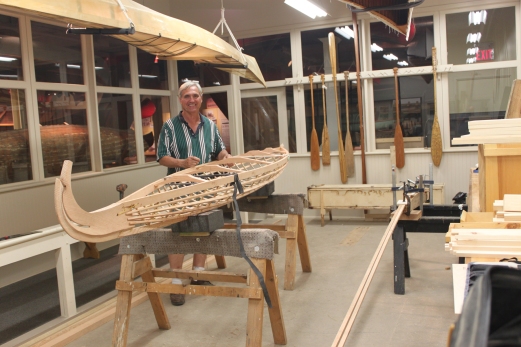You are currently browsing the tag archive for the ‘Arctic’ tag.
A weekend visit to The Canadian Canoe Museum will often lead to an encounter with a very talented woodworker on our team named Russ Parker. Retired from a long career with the Toronto Fire Services and an avid guitar maker, Russ has also been producing some very fine skin-on-frame kayaks in our Living Traditions Workshop as a Canadian Canoe Museum volunteer.
Like the rest of this community also involved with The Canadian Canoe Museum, I share a peculiar affection for the little human-powered boats that are so celebrated in our country’s heritage. It is certainly my privilege as the Museum’s Curator to spend quite a bit of time with its collection of over 600 of these little boats.
If pressed, I do not have a favourite canoe– at least today’s choice would not be the same as yesterday’s favourite. I will however make a small confession: I’ve long had a soft spot for one unusual branch in the canoe’s family tree and it usually has an outboard motor hanging off the end. Now I’m not really a motorboat person, not at all, but there’s something about the shape and workboat finish of the great freighter canoes found across the Canadian north that gives me a thrill. Read the rest of this entry »
Determining a useful boundary between what has historically been deemed a kayak rather than a decked, double-paddle canoe is something of a messy task and won’t be the goal of this short piece. Suffice it to say that, 150 years ago, the kayak was pretty much a boat made by and paddled almost exclusively by the Inuit. Meanwhile, the popularity of canoeing in the late nineteenth-century had caused the development of umpteen patented methods of shaping wood into the complex, curved forms required for a canoe (whether open or decked). Outside of its original Arctic context, efforts at commercial kayak construction continued to experiment well within sight its Inuit root, relying upon a waterproof skin stretched tight by an internal frame even well into the 20th century. Read the rest of this entry »





